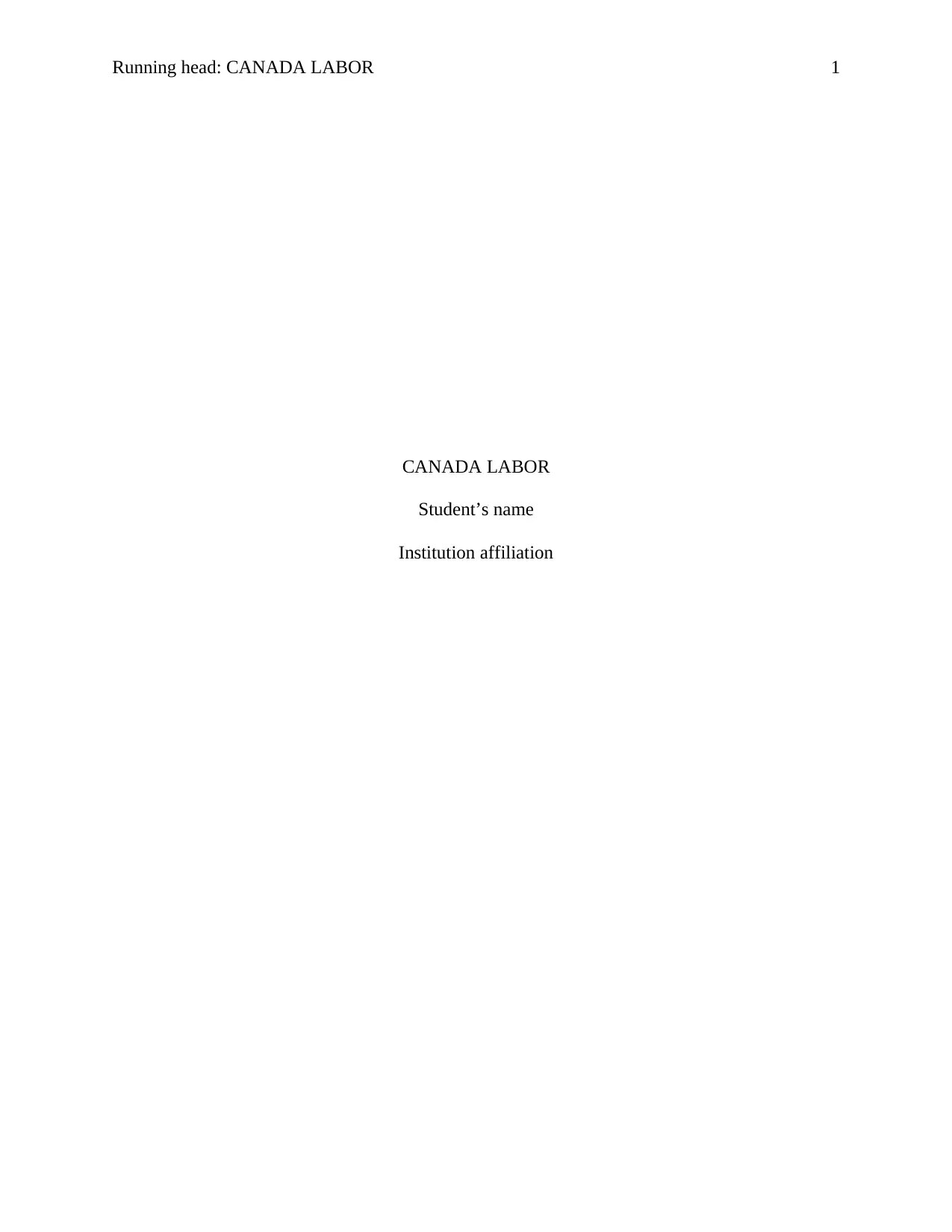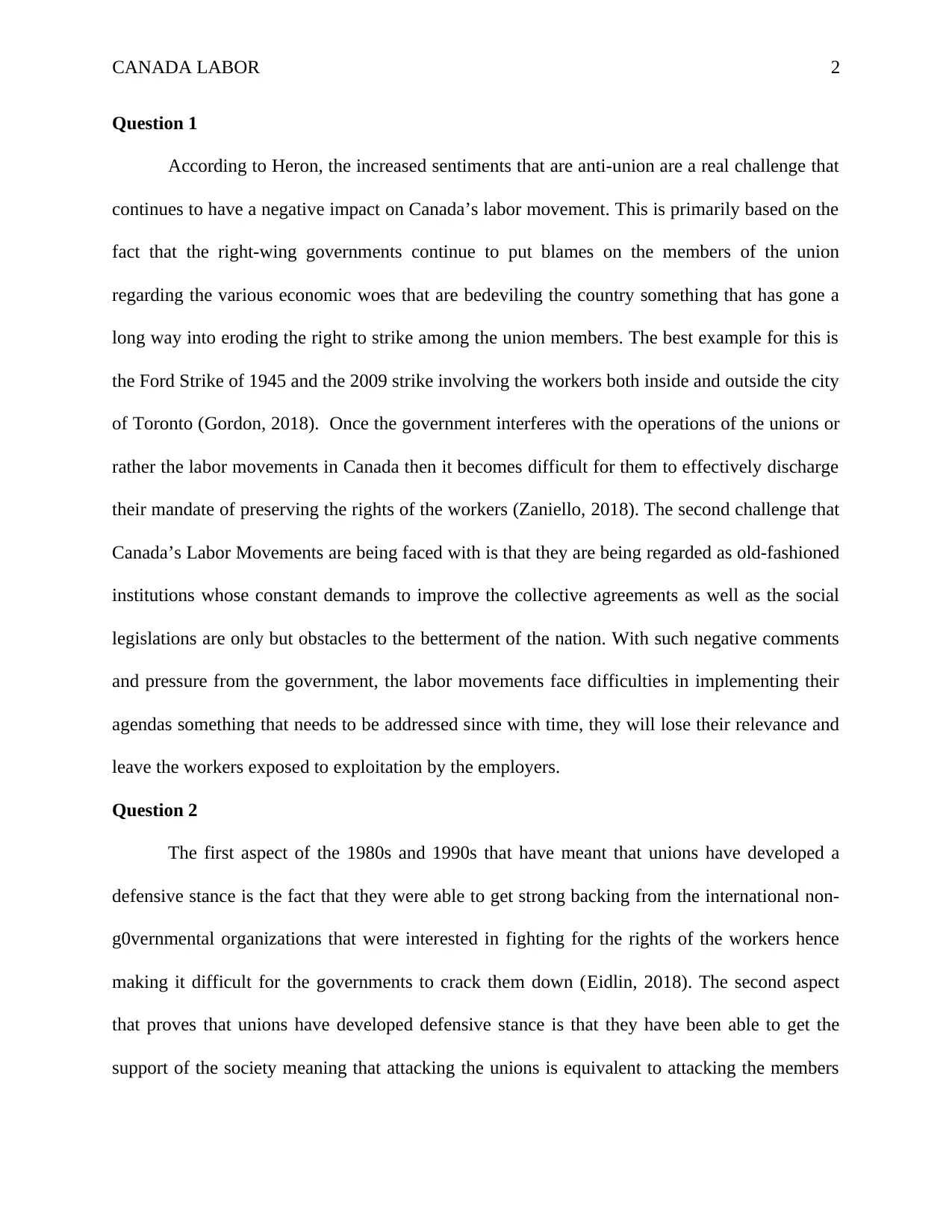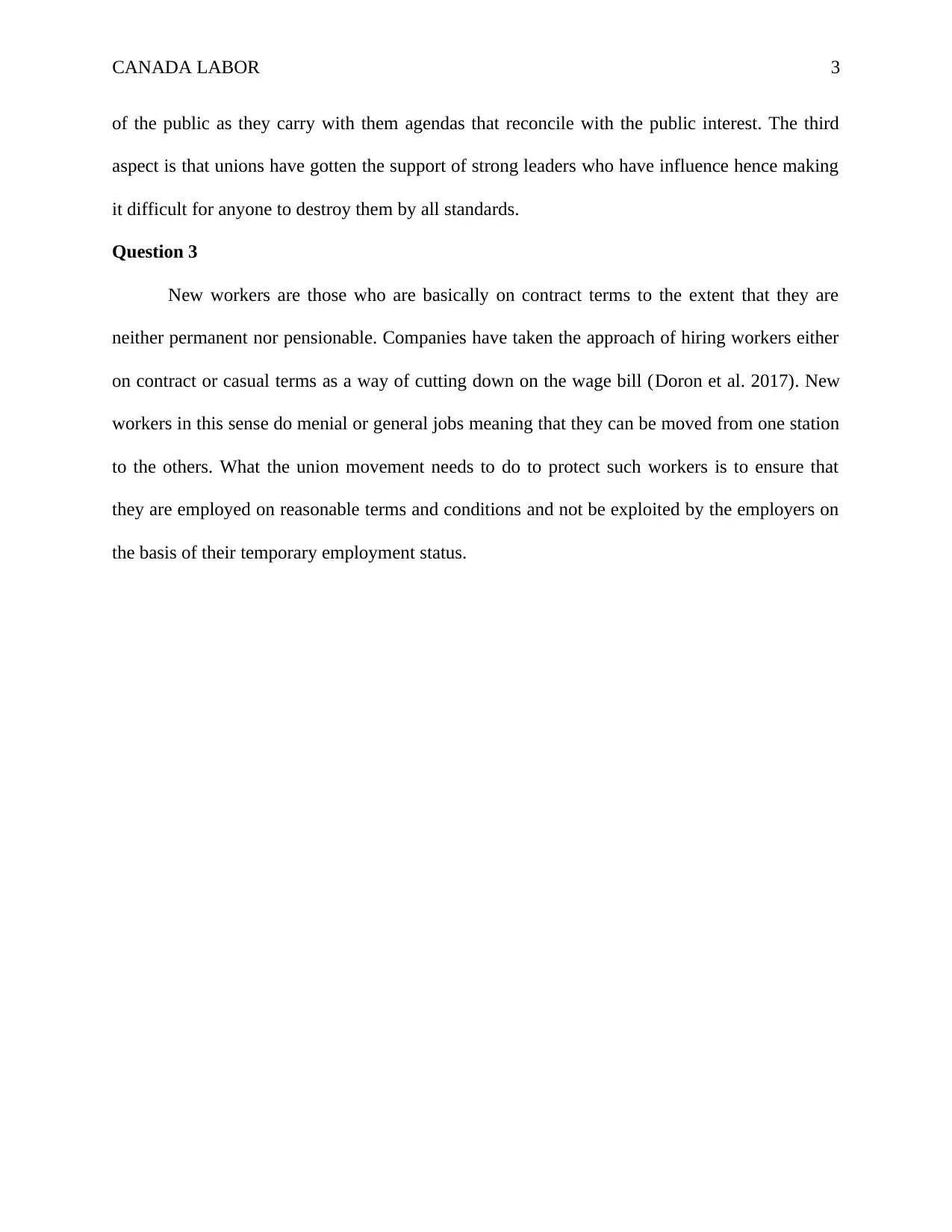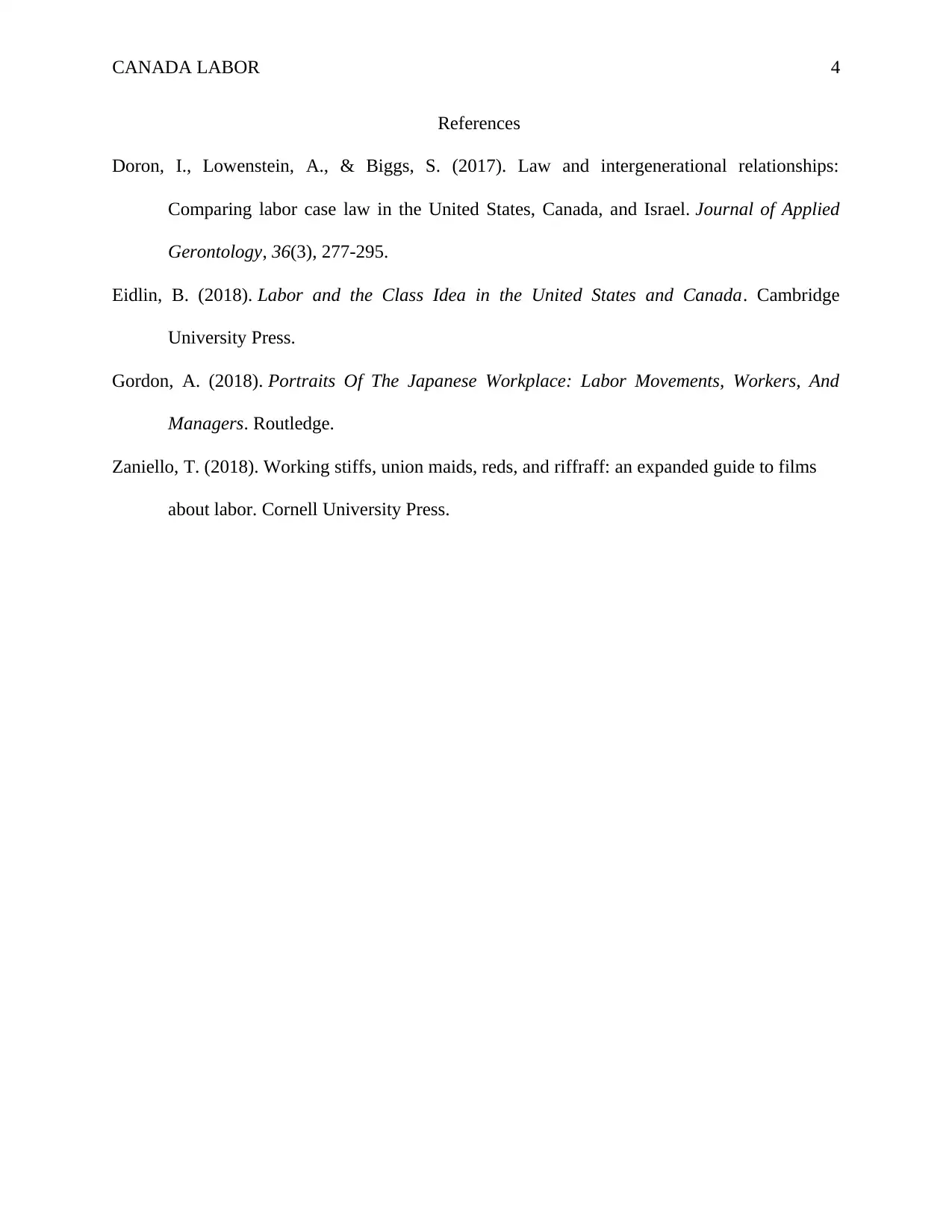Challenges and Defensive Stance of Canada's Labor Movement
VerifiedAdded on 2023/05/27
|4
|654
|343
AI Summary
This article discusses the challenges faced by Canada's labor movement, including anti-union sentiments and being regarded as old-fashioned institutions. It also explores how unions have developed a defensive stance and the need to protect new workers who are on contract terms.
Contribute Materials
Your contribution can guide someone’s learning journey. Share your
documents today.
1 out of 4
![[object Object]](/_next/static/media/star-bottom.7253800d.svg)









